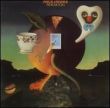| btimm | 13 Jun 2013 22:17 | Quote |
|
Okay, so I have been messing around with my guitar, just making up random fingerings to see what sounds good and what sounds like my 4-year-old trying to play. One thing I thought was kinda cool, but not unexpected either really, was to take a shape and move it along the neck. Since I am sounding fairly vague here (likely because I have no clue what I am talking about here), I will give an example. Take the typical E chord in the open position. Just to show something really quick that sounded kinda cool to me, almost like an ending to a song, I played the following rhythm: 1 2-and-a 3 4-and-a 1-and (kinda stoccato) [2]-and (where the two is silent) And then the fingerings for these four "sections" would be: 099800 077600 044300 022100 It sounds like there is a lot of resonance in the first three "sections" and it finally resolves to the E major chord. Okay, so it works and sounds kinda cool. Now, finally on to my question: WHY does it work? And is there a name for using the chord positions across the neck (NOT the same as a barre chord, because the open strings remain open and are not barred)? I would like to know if there is a name for this type of usage of chords or whatever so I could research it more on my own as well. I hope I am being clear enough here, because it doesn't seem like I am. I tried myself to look up the chord names and see if there was something I could see myself. But unfortunately, the chord naming tool says that 044300 isn't even a chord, lol. I am not overly concerned, as if it sounds good, then in my opinion, just go with it. But I want to learn about it if it something commonly used and there is material on it. Thanks!! |
||
| |||||||||||||||||||||
Copyright © 2004-2017 All-Guitar-Chords.com. All rights reserved.



